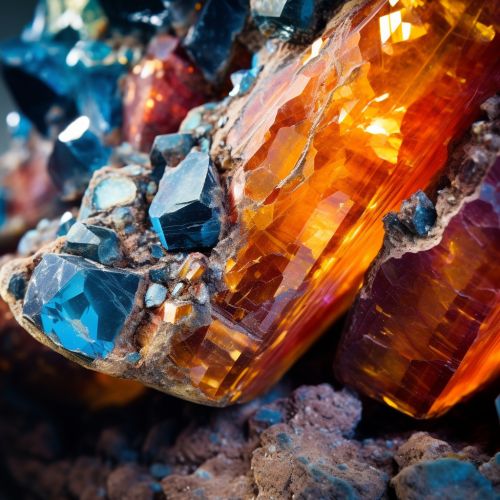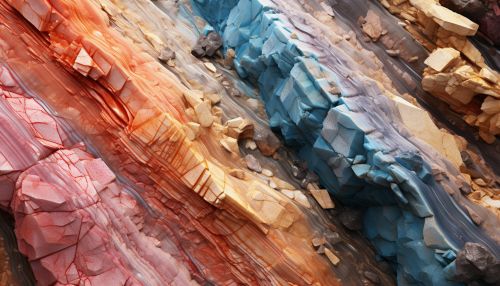The Role of Tectonics in the Formation of Mineral Deposits
Introduction
The Earth's crust is a dynamic environment, shaped and reshaped by various geological processes. One of these processes is tectonics, the study of which provides a comprehensive understanding of the formation of mineral deposits. This article delves into the role of tectonics in the formation of mineral deposits, exploring the various tectonic settings and processes that contribute to mineralization.


Tectonic Settings and Mineralization
Tectonic settings play a crucial role in the formation of mineral deposits. The distribution of mineral deposits is not random but is closely related to the tectonic environment. The three primary tectonic settings associated with mineralization are convergent boundaries, divergent boundaries, and transform boundaries.
Convergent Boundaries
Convergent boundaries, where two tectonic plates collide, are sites of significant mineralization. The subduction of oceanic crust under continental crust results in the formation of orogenic belts, which are rich in mineral deposits. The intense heat and pressure during subduction cause the release of fluids from the subducting plate, triggering the formation of ore deposits.
Divergent Boundaries
Divergent boundaries, where two tectonic plates move apart, are also significant sites of mineralization. The separation of plates leads to the formation of mid-ocean ridges and rifting zones, where new crust is formed through volcanic activity. The associated heat flow and hydrothermal circulation lead to the formation of seafloor massive sulfide deposits.
Transform Boundaries
Transform boundaries, where two plates slide past each other, are less commonly associated with mineralization. However, they can play a role in the formation of certain types of mineral deposits, such as gold deposits in shear zones.
Processes of Mineralization
The processes of mineralization are complex and varied, involving a range of geological, chemical, and physical phenomena. These processes are often closely linked to tectonic activity, with the movement of tectonic plates providing the necessary conditions for mineralization.
Magmatic Processes
Magmatic processes are a primary source of mineral deposits. The formation of igneous rocks through the cooling and solidification of magma or lava can lead to the concentration of valuable minerals. The segregation of minerals during the crystallization process can result in the formation of magmatic segregation deposits.
Hydrothermal Processes
Hydrothermal processes are another significant source of mineral deposits. These processes involve the circulation of hot water through the crust, leading to the dissolution, transport, and precipitation of minerals. Hydrothermal mineral deposits can form in a variety of tectonic settings, including both convergent and divergent boundaries.
Metamorphic Processes
Metamorphic processes can also contribute to the formation of mineral deposits. The transformation of existing rocks under high pressure and temperature conditions can lead to the concentration of valuable minerals. Metamorphic mineral deposits are often associated with orogenic belts at convergent boundaries.
Conclusion
Tectonics plays a pivotal role in the formation of mineral deposits. The movement of tectonic plates creates the necessary conditions for mineralization, with different tectonic settings associated with different types of mineral deposits. Understanding the relationship between tectonics and mineralization is crucial for the exploration and extraction of valuable minerals.
